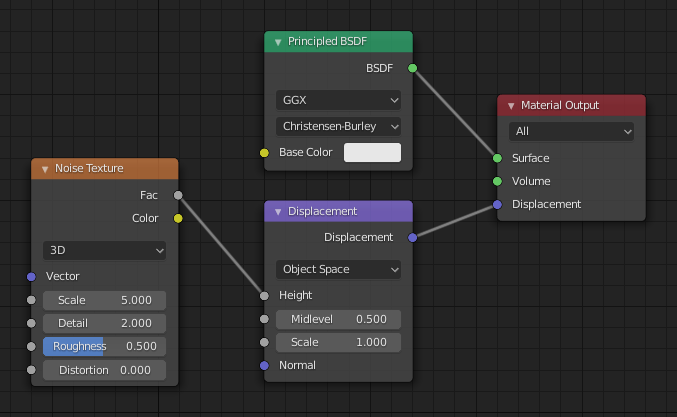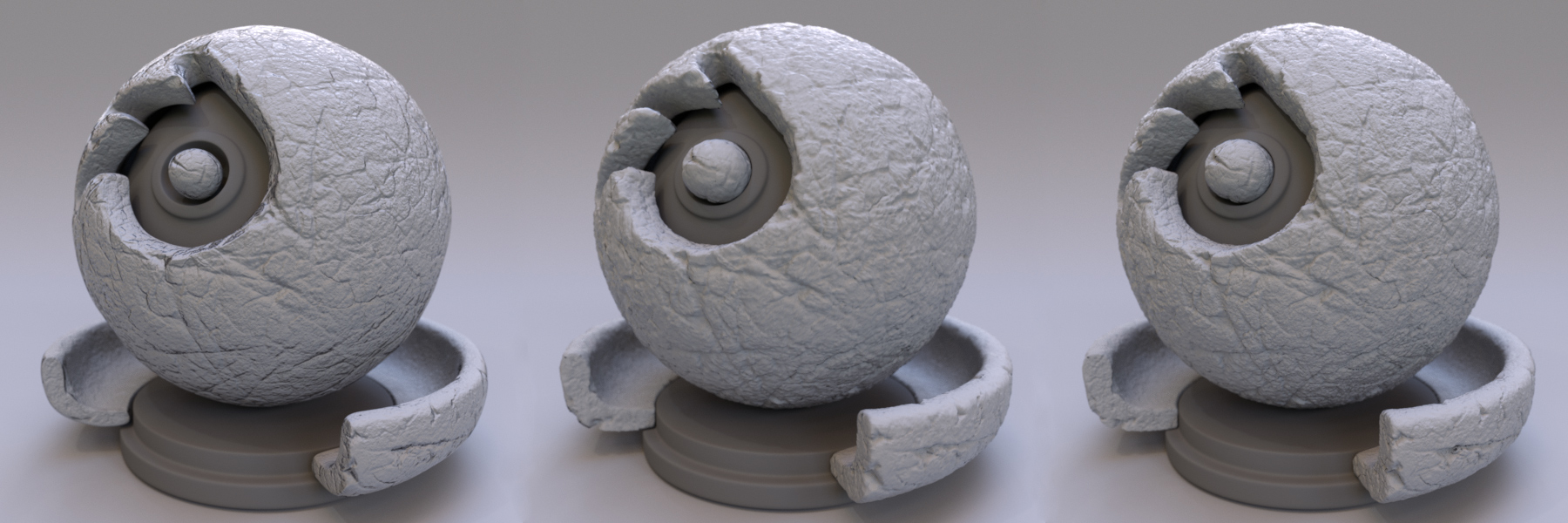置换着色器¶
参考
- 面板
可以使用置换着色器将细节添加表面的形状。
To create displacement, connect a Displacement or Vector Displacement node to the displacement input of the Material Output node. Procedural, painted or baked textures can then be connected to these nodes.

典型的置换节点设置。¶
存在三种置换方法,具有不同的精度、性能和内存占用。

仅凹凸,仅置换,置换和凹凸相结合。¶
仅凹凸¶
The least accurate but most memory efficient method is bump mapping. This method does not actually alter the mesh surface, but merely changes the shading to make it seem so.
凹凸贴图通常用于在模型上添加较小的细节,例如皮肤上的毛孔或皱纹。
For baked bump maps 8-bit images are commonly used, however 16 or 32-bit float maps can provide better looking results. When using image textures use Cubic interpolation to avoid stepping artifacts, these are more visible for bump maps than other types of textures.
Important
因为凹凸贴图是一种假效果,所以如果几何体的实际形状与凹凸贴图的形状不太相同,它可能会导致瑕疵。如果发生这种情况,应降低凹凸贴图的强度或使用实际的置换。
仅仅置换¶
仅适用于Cycles
最精确和最占内存的置换方法是将真实置换应用于网格表面。
它需要对网格进行精细细分,这可能需要大量的内存。 自适应细分 是细分网格的最佳方法,根据物体与相机的距离,可以使用恰当的细分量。
For baked displacement maps, best results are achieved with 16 or 32-bit float maps, as 8-bit images often can not represent all the necessary detail.
See also
通过 置换修改器 也可以用来取代网格。
置换和凹凸¶
仅适用于Cycles
都可以结合使用两种方法,实际置换来获得更大的置换,而凹凸可以获得更精细的细节。这可以提供一个很好的平衡来减少内存使用。
Once you subdivide the mesh very finely, it is better to use only actual displacement. Keeping bump maps will then only increase memory usage and slow down renders.